I continue the story about the Peter and Paul Fortress in St. Petersburg, Russia, started here, here, and here. Today I want to tell you about a street art installation that could be seen in the walls of the fortress from June 16, 2021 to September 16, 2021.
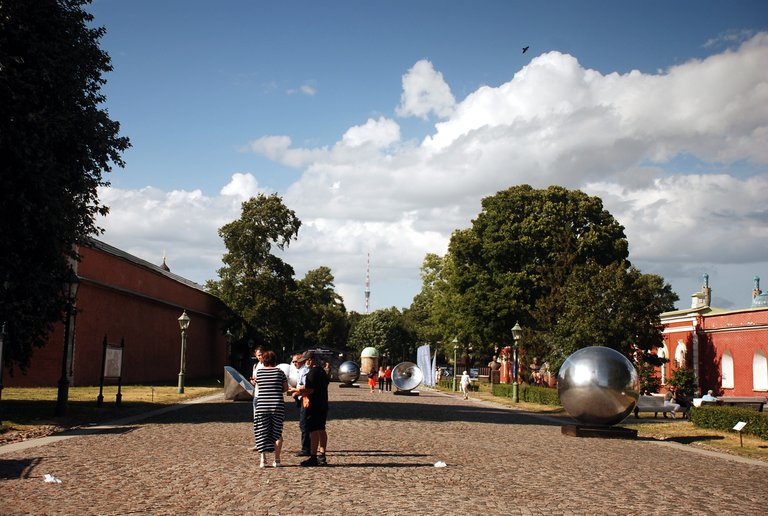
You probably know that in Central Russia there is a so-called Golden Ring (there are even two of them: there is a Large Golden Ring and a Small Golden Ring), a popular tourist route through ancient Russian cities rich in monuments of ancient Russian architecture. The term Golden Ring was coined in 1967 by a Soviet journalist. As for the cities and regions of the North-West of Russia, which are also of interest to tourists, they have for some time been called the Silver Necklace of Russia. The development of this project began quite recently, in 2015, the project unites 11 regions of the North-West of our country: St. Petersburg and its suburbs, Leningrad, Novgorod, Pskov, Arkhangelsk, Vologda Regions, the Republic of Karelia, as well as the Murmansk Region, the Komi Republic, the Nenets Autonomous Region and the Kaliningrad Region.
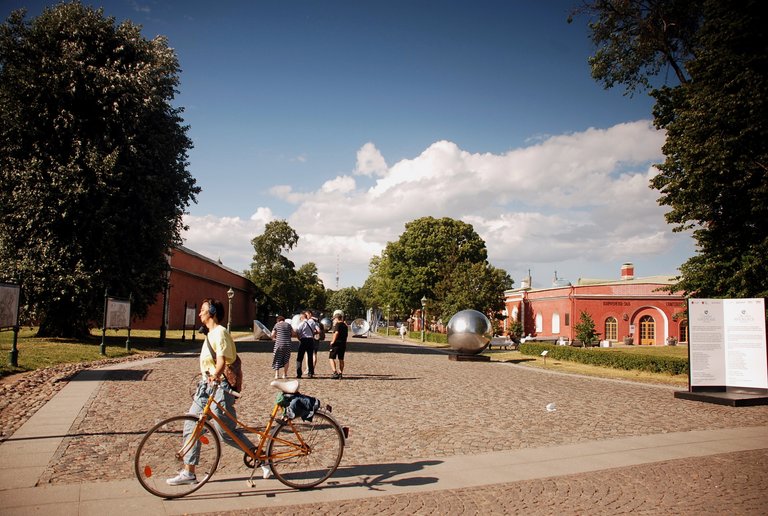
And it was in support of this project that an exhibition of silver "beads" of this Necklace was held in the Peter and Paul Fortress. Each bead of 1.8 meters in size symbolizes one of the listed regions. Some, however, do not look like beads at all, but who said that only spherical beads should be in a necklace?)) Eleven famous people, including a sculptor, a director, a choreographer, a TV presenter, an actress, an astronaut and others, were commissioned to come up with the design of these beads. Some of them (not all) were born or live in these regions, so it was probably easier for them to choose an image associated with their native region and try to present this image in the form of a bead))
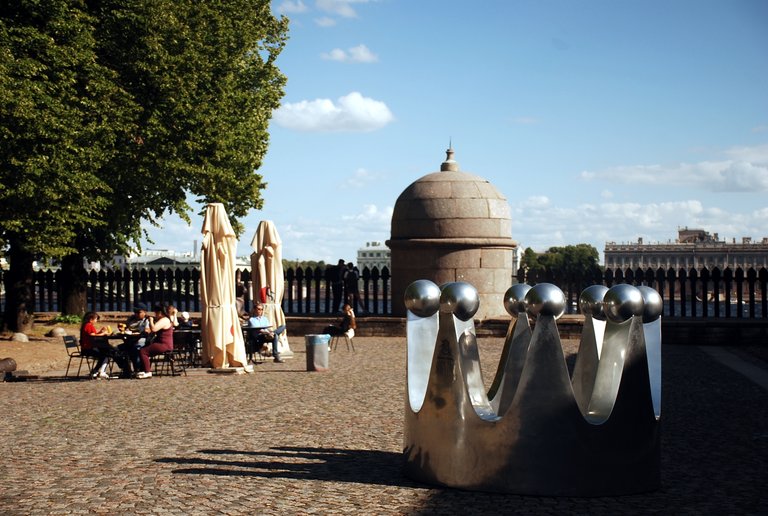
But the famous sculptor Mikhail Shemyakin, whom I have already mentioned in connection with the monument to Peter I, which is located right here in the fortress, as far as I know, has nothing to do with the Kaliningrad region. Nevertheless, he chose a very simple and understandable image for his bead: Kaliningrad, Russia's westernmost city, was once called Konigsberg. Koenig in German means king, and every king is supposed to wear a crown))

As for the bird in the following pictures, it is a symbol of Veliky Novgorod. According to legend, when in 1570 Ivan the Terrible brutally dealt with the inhabitants of Novgorod, a dove sat down to rest on the cross of St. Sophia Cathedral. Seeing the terrible carnage from there, the bird was petrified with horror. After that, the Mother of God revealed to one of the monks that this dove was sent to comfort the city, and until it flies off the cross, it will guard the city.
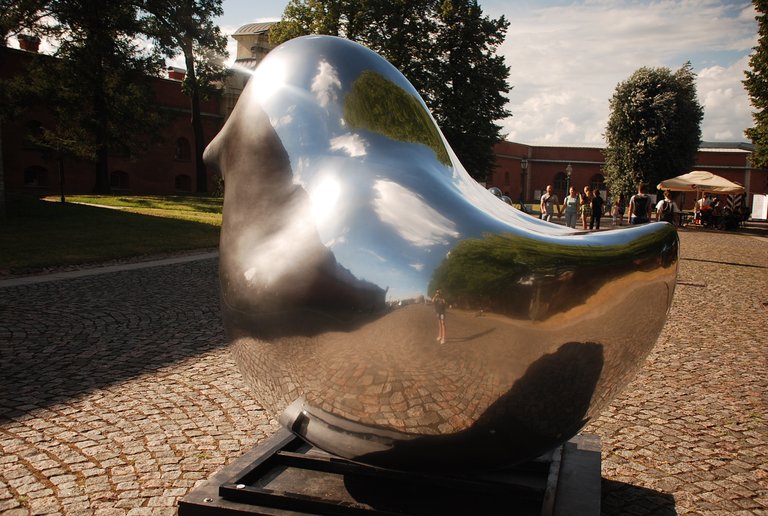
And here I am in the reflection))
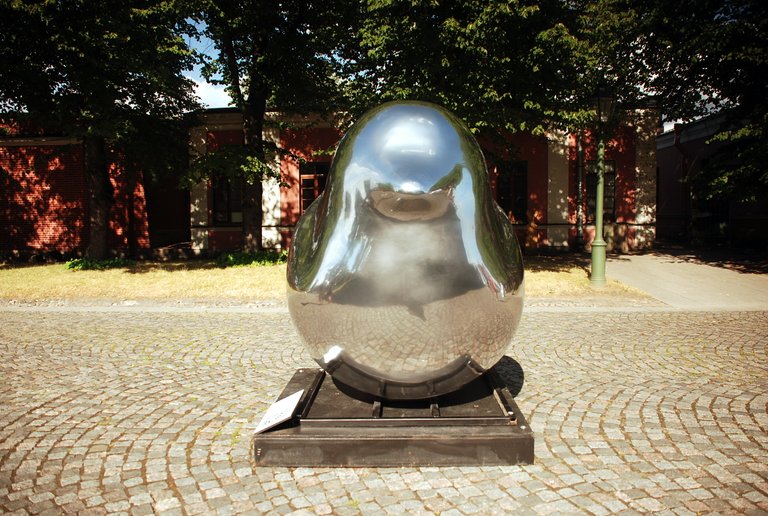
The helmet-shaped bead in the background is the Pskov region. Such helmets were worn by ancient Russian warriors, and I think it was in such helmets that they fought in the Ice Battle of 1242 on Lake Peipsi (in Russian Chudskoe Lake), which is located in the Pskov region between Russia and Estonia.
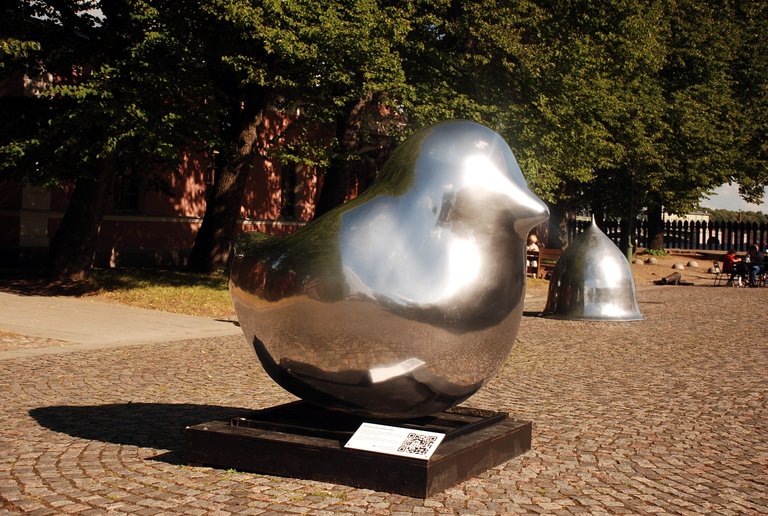
And this bead in the form of a cloudberry symbolizes the Republic of Karelia. The local forests are very rich in these delicious and healthy berries. However, they grow not only there)
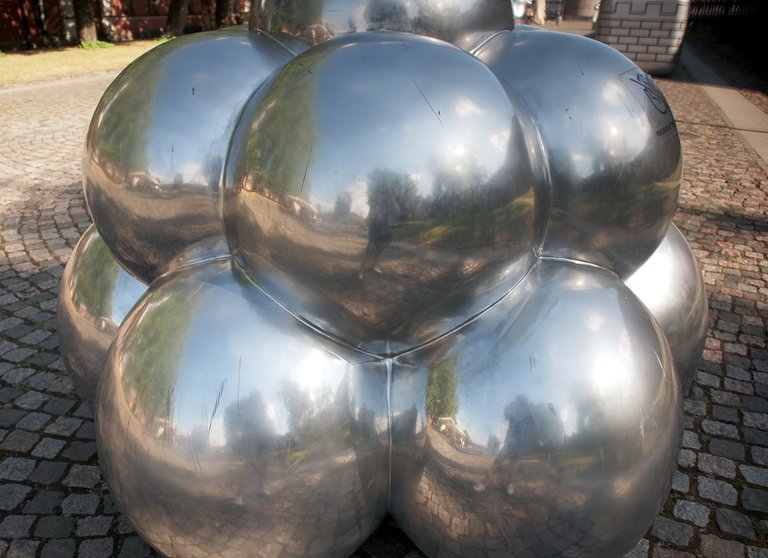
Unfortunately, that day I didn't have enough time to come up and photograph each of the beads separately. And when I was about to go to the fortress again, it turned out that the exhibition had already closed. But here are the remaining beads all together (with the exception of the bead dedicated to St. Petersburg, it is spherical and smooth, in the first two photos it is on the right). From left to right: Arkhangelsk region (here is the largest diamond deposit in the European part of Russia, so the bead is a diamond); Vologda region, famous for its lace; The Murmansk region, where the earth is rich in those elements of the periodic table of Mendeleev, which are depicted on the bead; the Nenets Autonomous Region (the design of the bead is inspired by a local fairy tale); the Komi Republic is represented by a bead in the form of a wave of the Buredan waterfall, which is located on the Kara River. They say it's an amazingly beautiful place!)

Camera used Nikon D80
Thank you for stopping by and reading it
Your Irchen